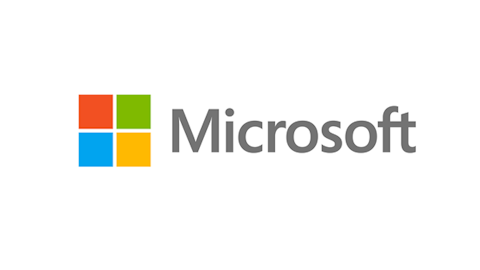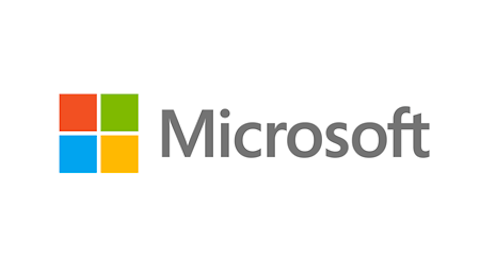In a Form 4 filing with the SEC yesterday, Jeffrey Ubben’s ValueAct Capital disclosed seven purchases of Microsoft Corporation (NASDAQ:MSFT) stock between February 2 and February 4, totaling slightly over 1 million shares. The purchases increased their position in Microsoft, which has long been their most valuable holding, to 67.9 million shares.

Ubben co-founded ValueAct in 2000, and has been both its CEO and Chief Investment Officer ever since. The activist fund manages a small portfolio of valuable, long-term positions in companies it feels are undervalued, taking large ownership stakes and using its position to constructively work with the boards and upper management of those companies to affect positive change.
Their strategy of focused activist investing has proven extremely successful, and forms some of the foundation for our own investing principles. ValueAct’s 13F positions returned an average of 1.29% per month between 2002 and 2012. The S&P 500 Index returned an average of 0.47% per month during the same period. All investors had to do was blindly imitate Ubben’s stock picks to outperform the market by 10 percentage points per year. This performance is even better than Warren Buffett‘s returns during the same period.
In early 2013, coming off that exceptional 11-year run, ValueAct made their move into Microsoft Corporation (NASDAQ:MSFT), purchasing 33.35 million shares of the legendary, but stagnating (at least stock-wise) software maker in the first quarter of 2013, and building that up to 57.75 million shares in the second quarter, a $2 billion investment all told. It was a bold and even contrarian move for the fund, who seemed out-to-lunch on any plans of activist investing in the giant company; even their $2 billion investment only amounted to a 1% stake.
Even aside from that, the stock itself was not particularly attractive, at least to the average analyst and investor. David Einhorn targeted Microsoft at the 2011 Ira Sohn Conference but that went nowhere (read transcript of Einhorn’s presentation). It had tread water for the past decade under the guidance of Steve Ballmer, whose leadership it was rumored ValueAct was concerned about. Yet as contrarian as the move seemed in many ways, ValueAct also summed up their investment succinctly when discussing it in their First Quarter 2013 Report, where it was their Featured Investment:
Some of our most successful investments over the years have been in situations where other investors can’t seem to shed their past perceptions of the company’s prospects.
They referenced Adobe Systems Incorporated (NASDAQ:ADBE), whom they also invested in under similar circumstances; their stock had stagnated for years, and was seen by investors as nothing more than one to be traded in and out of around product cycles. ValueAct saw the potential for far more, for Adobe to take advantage of real and growing innovation with bold tweaks to their subscription methods, which they made, resulting in completely altered perceptions. Adobe is up nearly 200% since the start of 2013 as a result, after flatlining for seven years. ValueAct recently sold some of their position to enjoy the windfall of that investment. They believed the same could be true of Microsoft.
We believe that Microsoft suffers a similar perception problem to the one that existed when we initially invested in Adobe. The company has long been regarded as a Windows / PC-cycle stock. In fact, just last week, dire predictions about near term PC deliveries spurred another round of terrible Microsoft headlines. Sell-side analysts focus on Microsoft’s efforts to drive Windows client success in a changing computing world and have become increasingly bearish after the lukewarm launch of Windows-8, which many hoped would revive PCs.

As they said, this was the common perception of Microsoft Corporation (NASDAQ:MSFT), and yet a very narrow one of the company’s true potential and worth.
Instead of looking at Microsoft through the usual PC lens, we look at it through our “plumbing” lens and we like what we see. Nearly 70% of Microsoft’s earnings come from the enterprise-centric business divisions of Server & Tools and Microsoft Business Division (e.g. Office). These businesses derive 60% of revenue from multi-year annuity agreements and have grown EBIT nearly 10% per year over the past five years.
Perhaps more importantly, these businesses were in no way reliant on PCs or continuing PC sales, and their revenue continued to grow even as PC sales slumped, despite the perception that Microsoft was a company heavy reliant on a successfully PC ecosystem.
Microsoft has demonstrated an ability to drive new and premium products into the enterprise customer base and we believe there are plenty of opportunities for them to continue to drive growth. These businesses have already shown a de-coupling from the PC cycle and Microsoft is accelerating the trend with the subscription based pricing of Office 365. Similar to Adobe’s success with “Creative Cloud,” we see the potential for significant migration of Exchange / Office 365 to the cloud, with pricing upside and positive implications for the way investors perceive and value Microsoft.

By late summer 2013, Microsoft Corporation (NASDAQ:MSFT) was well on their way to unlocking the potential ValueAct saw in them, as well as changing the perception of their business amongst other investors. Steve Ballmer dramatically announced his decision to retire during the summer (though this was not related to any pressure from ValueAct to do so, at least not officially), and ValueAct President Mason Morfit was granted a seat on Microsoft’s board some days later, one of 10 at the time.
Almost instantly, perceptions began changing, and Microsoft Corporation (NASDAQ:MSFT)’s stock was up 40% at the end of 2013 from where it was at the beginning of the year, as ValueAct pushed them to focus on enterprise software and business services. That helped spur ValueAct to another impressive year, returning nearly 30% net of fees in 2013. Microsoft’s stock followed that up with another strong year in 2014, rising nearly 30%.

Part of new Microsoft Corporation (NASDAQ:MSFT) CEO Satya Nadella’s move on the enterprise front has been the shift into mobile and cloud computing, as well as moving some of Microsoft’s business software such as Office off Windows and onto competitor’s platforms, including those of Apple Inc. (NASDAQ:AAPL)and Google Inc (NASDAQ:GOOGL).
While those moves have gained praise for the new CEO, ValueAct certainly deserves their fair share as well for being a key catalyst in helping spur Microsoft’s turnaround and showing them and the world how they could succeed. Their influence on Microsoft with less than 1% ownership of the company shows the growing power of activist investing, and how invaluable it can be for both companies and other shareholders, and why it’s become so important as an investor to track the involvement of hedge funds in ownership of stock. In Microsoft’s case, ValueAct clearly believes there is still further upward momentum and growth in store for the company as they continue to transition to and build upon their new model, which investors should take note of.
Other hedge funds we track with positions in Microsoft Corporation (NASDAQ:MSFT) include Donald Yacktman’s Yacktman Asset Management with 56.46 million shares, First Eagle Investment Management with 36.29 million shares, and Boykin Curry‘s Eagle Asset Management with 32.86 million shares.
Disclosure: None





